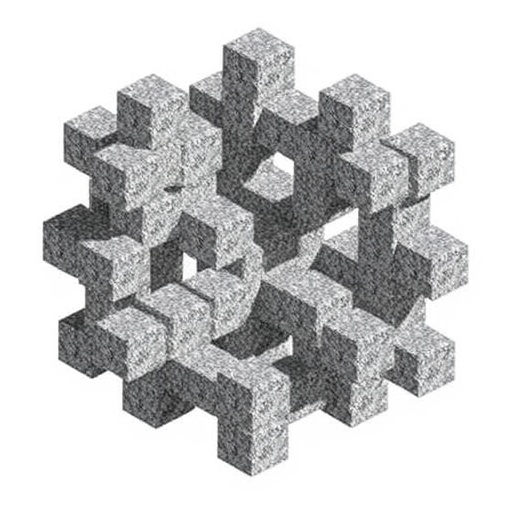In a recent publication, researchers led by Guo X., along with colleagues Zhou X. and Liu L., have introduced a groundbreaking advancement in the realm of energy storage technologies, specifically focusing on sodium ion batteries. The paper, titled “Conductive NaTi2(PO4)3/C nanocomposite by spray drying for enhanced sodium energy storage,” comes as a crucial contribution to the ongoing quest for more efficient and sustainable energy storage solutions, particularly emphasizing the need for alternatives that improve performance while reducing reliance on lithium, a critical element with limited supply. The findings promise to open new avenues for rechargeable battery applications, paving the way for improved energy efficiency and sustainability.
The study’s innovative approach employs a novel spray drying technique to create a NaTi2(PO4)3/C nanocomposite, a combination of sodium titanium phosphate (NaTi2(PO4)3) with carbon matrix enhancements. This technique not only ensures a homogenous distribution of the active material but also allows for the optimization of the nanocomposite’s electrochemical properties. By achieving a unique microstructure and morphology, the researchers aim to enhance the conductivity and overall performance of sodium ion batteries, addressing the critical factors that limit their widespread adoption in modern energy storage systems.
One of the paper’s highlights is the focus on the conductivity of the developed nanocomposite. The authors emphasize that enhancing conductivity is paramount in improving the rate capability of sodium ion batteries. The NaTi2(PO4)3/C nanocomposite demonstrates a significant increase in electrical conductivity, resulting from the strategic incorporation of carbon into the composite structure. This improvement is expected to facilitate faster ion transport, a critical requirement for high-performance batteries, particularly those that undergo numerous charge and discharge cycles.
.adsslot_barRVFInTj{width:728px !important;height:90px !important;}
@media(max-width:1199px){ .adsslot_barRVFInTj{width:468px !important;height:60px !important;}
}
@media(max-width:767px){ .adsslot_barRVFInTj{width:320px !important;height:50px !important;}
}
ADVERTISEMENT
Moreover, the spray drying method presents numerous advantages over traditional fabrication techniques. Conventional methods often result in agglomerated particles, detrimental to the electrochemical performance of battery materials. In contrast, the spray drying process enables the production of finely tuned particles with controlled size, shape, and porosity, which directly contributes to enhanced electrochemical performance. The authors remark that achieving a well-defined particle morphology not only boosts the surface area available for electrochemical reactions but also reduces the path length for Na+ ion diffusion, thereby fostering improved battery kinetics.
The authors conducted extensive electrochemical assessments of the NaTi2(PO4)3/C nanocomposite, revealing remarkable capacity retention during cycling tests. This retention is a crucial indicator of the material’s stability and effectiveness as an electrode in sodium ion batteries. The researchers report that the nanocomposite exhibits superior cycling stability compared to conventional sodium storage materials, reinforcing its potential for real-world applications. Such findings underscore the importance of structural integrity in enhancing the longevity and reliability of energy storage systems.
The implications of this research extend beyond sodium ion batteries. The emerging market for energy storage solutions is rapidly expanding due to the increasing integration of renewable energy sources such as solar and wind. Efficient energy storage systems are vital for balancing the intermittent nature of these renewable sources, making materials like NaTi2(PO4)3/C particularly attractive. The transition towards sustainable energy solutions necessitates the development of scalable and efficient energy storage technologies that can keep pace with growing energy demands.
In addition to the favorable structural and electrochemical properties, the cost-effectiveness of the spray-dried NaTi2(PO4)3/C nanocomposite sets it apart from other materials. The reduced costs associated with sourcing and processing sodium-based materials, coupled with the efficiency of the spray drying method, positions this nanocomposite as a competitive candidate in the energy storage market. Economic considerations play a crucial role in the adoption of new technologies, and the findings from this study could lead to more accessible energy storage solutions for various applications.
As the world increasingly turns to sustainable energy practices, the role of research in advancing material sciences becomes more critical. The findings presented in Guo et al.’s study highlight the importance of innovative methodologies and materials in overcoming current limitations associated with energy storage systems. With ongoing advancements in nanotechnology and materials science, the landscape of energy storage is evolving, and the sodium ion batteries supported by NaTi2(PO4)3/C nanocomposites might play a vital role in the future of energy.
The authors express optimism regarding the scalability of their findings. Future studies will likely focus on refining the spray drying process and further optimizing the nanocomposite’s structure for even greater performance. As researchers delve deeper into the specifics of sodium ion battery technology, the potential for advancements in capacity, longevity, and efficiency remains promising. Such progress could usher in a new era of energy storage, characterized by sustainability, affordability, and resilience, aligning with global efforts to combat climate change and promote renewable energy use.
The implications of this line of research symbolize a paradigm shift in the energy storage landscape. As challenges around energy sustainability become more pronounced, studies like this one provide crucial insights that can fuel progress in the field. The synergy between scientific innovation and practical application will ultimately determine the trajectory of energy storage technologies, particularly in the context of rapidly evolving global energy needs.
Subject of Research: Sodium Energy Storage
Article Title: Conductive NaTi2(PO4)3/C nanocomposite by spray drying for enhanced sodium energy storage
Article References: Guo, X., Zhou, X., Liu, L. et al. Conductive NaTi2(PO4)3/C nanocomposite by spray drying for enhanced sodium energy storage. Ionics (2025). https://doi.org/10.1007/s11581-025-06541-5
Image Credits: AI Generated
DOI: https://doi.org/10.1007/s11581-025-06541-5
Keywords: Sodium ion batteries, NaTi2(PO4)3/C nanocomposite, spray drying, energy storage, sustainable technology.
Tags: advancements in sodium ion technologyconductivity enhancement in battery materialsefficient energy storage alternativeselectrochemical properties optimizationenhancing sodium storage technologiesinnovative nanocomposite microstructureNaTi2(PO4)3/C nanocompositerechargeable battery applicationsreducing lithium reliance in batteriessodium ion batteriesspray drying technique for energy storagesustainable energy storage solutions





